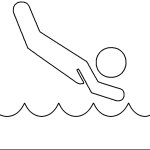Specific Learning Disability
Overview
A specific learning disability (SLD) is
a disorder in one or more of the basic psychological processes involved in understanding or in using language, spoken or written, which may manifest itself in the imperfect ability to listen, think, speak, read, write, spell, or do mathematical calculations and includes conditions such as perceptual disabilities, brain injury, minimal brain dysfunction, dyslexia, and developmental aphasia. (IDEA)
Thirty-three percent of students qualifying for services under the IDEA have an SLD designation (National Center for Education Statistics, 2022).
The most prevalent type of disability among school-aged children, specific learning disability (SLD) affects a child’s ability to read, write, speak, reason, or do math and include main types: dyslexia, dyscalculia, and dysgraphia.
A neurobiological issue, dyslexia affects a person’s ability with word recognition, spelling, and decoding (International Dyslexia Association, 2002). Also a neurobiological issue, dyscalculia affects a person’s ability to do math, including number sense, memorization of arithmetic facts, accurate and fluent calculation, and accurate math reasoning/concepts (The Dyslexia Association, 2023). Another neurobiological issue, dysgraphia, also known as Written Expression Disorder, affects a person’s writing ability, includeing letter formation/legibility, letter spacing, spelling, fine motor coordination, rate of writing, grammar, and composition (Chung, Patel, & Nizami, 2020).
Strengths
While students with dyslexia struggle to read, it doesn’t mean that they have, in any way, diminished intellectual capacity. Many brilliant people struggle with dyslexia, such as Leonardo Da Vinci, Christopher Tonkin, Picasso, Roald Dahl, Tom Walsh, Albert Einstein, Pollock, and Richard Benson, among others. Strengths include creativity, empathetic awareness, ability to make connections, problem solving, observant, big-picture thinking, strong narrative reasoning skills, and three-dimensional thinking (Cole, 2019). Many people with dyslexia can be gifted in many areas, such as mathematics, sports, music, design, drama, mechanics, and physics, among others (Moats & Dakin, 2017).
Much like students with dyslexia, students with dyscalculia have many strengths. While they may not excel at math, they excel at many other skills. Some of their common strengths include “creativity, problem solving, intuitive and strategic thinking and a love of words” (Lexxic, 2022). Other additional strengths include communication, big-picture thinking, and artistic abilities (University of Oxford, 2023).
Students with dysgraphia also tend to be strong problem solvers, as well as good at storytelling, leading, and oral recall of information (Exceptional Individuals, 2023). Teachers can encourage students to work within their strengths to ensure a higher level of self-worth and resiliency when they struggle with the challenging parts of their academics.
Needs
When it comes to word recognition, students with dyslexia require additional support with tasks such as learning to speak, learning to read, comprehending what they read, and learning a foreign language (Moats and Dakin, 2017). When it comes to “number sense,” students with dyscalculia may need additional support with understanding numbers and their numerical representation (Understood). Because students with dysgraphia face challenges with writing legibly, spelling, and understanding sentence structure (Medical News Today), teachers can offer options that support the act of writing, such as pen grippers or paper with raised lines, transparency in grading practices, alternative ways to complete assignments, and additional time to complete assignments and tests when needed.
 Reflection
Reflection
Supporting Students with a Specific Learning Disability
The section below explains some strategies for supporting students experiencing a specific learning disability. Based on what you have read so far, what strategies do you think might be useful for supporting students experiencing a specific learning disability?
Common Teaching Strategies
The Mayo Clinic, offers the following ways to help promote learning among students with dyslexia:
- Learn to recognize and use the smallest sounds that make up words (phonemes).
- Understand that letters and strings of letters represent these sounds and words (phonics).
- Understand what is read (comprehension).
- Read aloud to build reading accuracy, speed, and expression (fluency).
- Build a vocabulary of recognized and understood words (Dyslexia).
Understood.org offers the following ways to help promote learning among students with dyscalculia:
- Review what the student already has learned before teaching new skills.
- Teach students to “self-talk” through solving problems.
- Let the student write out charts or draw sketches to solve problems.
- Use graph paper to help line up numbers and problems.
- Give the student a list of the math formulas taught in the class.
- Use like coins, blocks, and puzzles to teach math ideas.
- Use attention-getting phrases like, “This is important to know because….”
- Use concrete examples that connect math to real life.
- Check in frequently to make sure the student understands the work.
- Use graphic organizers to organize information or help break down math problems into steps. (Classroom accommodations for dyscalculia)
The Child Mind Institute offers the following ways to help promote learning among students with dysgraphia:
- Use a pencil grip to help them hold the pencil correctly and comfortably.
- Use a keyboard in class for note-taking and written assignments.
- Get notes from the teacher.
- Use a recorder or dictation (speech-to-text) tool.
- Write on graph paper or in graphic organizers (which are often available online for free) to help them organize their letters and thoughts on paper.
- Allow extra time for writing assignments, note-taking, and written tests. (Understanding Dysgraphia)
 Deeper Dive
Deeper Dive
Specific Learning Disability
For more information about specific learning disability, review the following resources:
- Understanding Dyslexia
- Teaching Strategies for Students with Dyslexia
- Accommodating Students with Dyslexia in All Classroom Settings
- How to Help Kids With Dyscalculia
- When ‘Careless Mistakes’ Aren’t: Dyscalculia, Math Anxiety, and Learning Strategies That Help
- A Guide to Classroom and At-Home Accommodations for Dyscalculia
- Strategies & Tools to Help Kids with Dysgraphia
- Classroom Accommodations for Dysgraphia
References
Cole, C. (2019). Strengths of Dyslexia. Dyslexia Support South. Retrieved from https://www.dyslexiasupportsouth.org.nz/parent-toolkit/emotional-impact/strengths-of-dyslexia/
Chung, P. J., Patel, D. R., & Nizami, I. (2020). Disorder of written expression and dysgraphia: definition, diagnosis, and management. Translational pediatrics, 9(Suppl 1), S46–S54. https://doi.org/10.21037/tp.2019.11.01
Exceptional Individuals. (2023). What is dysgraphia. https://exceptionalindividuals.com/neurodiversity/what-is-dysgraphia/
Moats, L. C., Dakin, K. E. (2017). Dyslexia Basics. The International Dyslexia Association. Retrieved from https://app.box.com/s/3f36hzaedlnzq96v2xsz6a4uqxc7fkwt
National Center for Education Statistics. (2022). Students With Disabilities. Condition of Education. U.S. Department of Education, Institute of Education Sciences.
N.A. (2022). Definition of dyslexia. International Dyslexia Association. Retrieved from https://dyslexiaida.org/definition-of-dyslexia/
N.A. (2023). What is dyscalculia? The Dyslexia Association. Retrieved from https://www.dyslexia.uk.net/specific-learning-difficulties/dyscalculia/
N.A. (2022). What is Dyscalculia? Lexxic. Retrieved from https://www.lexxic.com/resources/dyscalculia#:~:text=People%20with%20dyscalculia%20often%20have,result%20of%20another%20neurological%20condition.
University of Oxford. (2023). Dyscalculia. https://edu.admin.ox.ac.uk/dyscalculia
U.S. Department of Education. (2018). Sec. 300.8 Child with a disability. Retrieved from https://sites.ed.gov/idea/regs/b/a/300.8
means a disorder in one or more of the basic psychological processes involved in understanding or in using language, spoken or written, that may manifest itself in the imperfect ability to listen, think, speak, read, write, spell, or to do mathematical calculations, including conditions such as perceptual disabilities, brain injury, minimal brain dysfunction, dyslexia, and developmental aphasia
